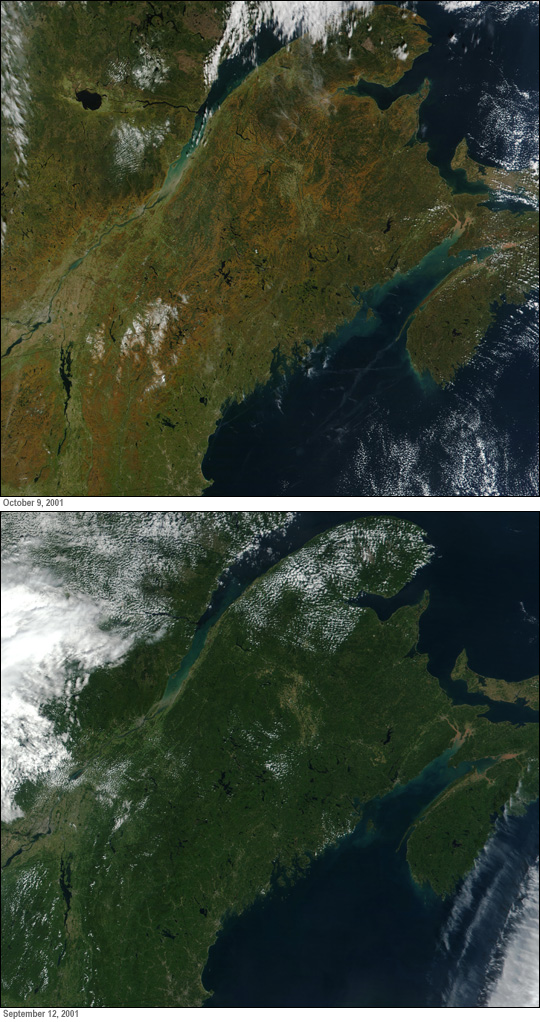


10-09-01 Hi-Res Image (3.4 MB)
09-12-01 Hi-Res Image (2.2 MB)
During the fall, the leaves of deciduous trees change color and then fall off in preparation for the winter season. In early autumn, when the season's first cold temperatures arrive, the forest canopy throughout the New England region transforms into a kaleidoscope of colors--rich hues of yellows, reds, oranges and browns.
These two images were collected by the Moderate-resolution Imaging Spectroradiometer (MODIS), flying aboard NASA's Terra satellite. The top image shows the region of North America spanning from the Canadian provinces of Quebec (upper left) and New Brunswick (upper right) down through the states of Maine, New Hampsire, Vermont, and Massachusetts (bottom). MODIS acquired the top image on October 9, 2001, after the autumn change in foliage began. The bottom image was acquired September 12, 2001, just before the trees began to change color.
Temperate deciduous forests experience different seasons. Their leaves change color and fall off in autumn and winter, and grow back in the spring to serve as the forests' mechanism for absorbing sunlight and carbon dioxide (for photosynthesis) throughout the spring and summer. This adaptation allows plants to survive cold winters.
[Teachers: Help your students learn more about the Earth's different land ecosystems, visit the Earth Observatory's Mission: Biome on-line activity.]
Images courtesy Jacques Descloitres, MODIS Land Rapid Response Team at NASA Goddard Space Flight Center